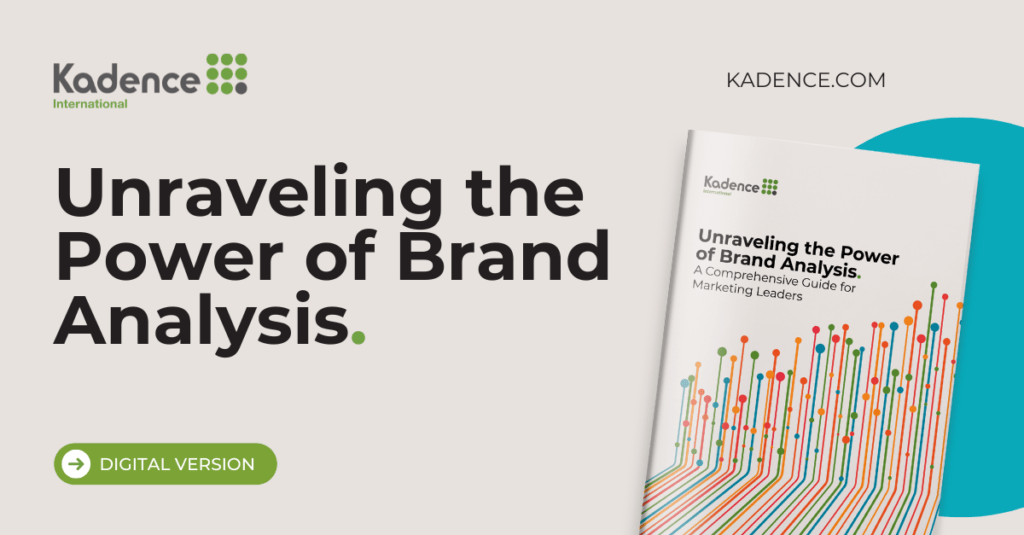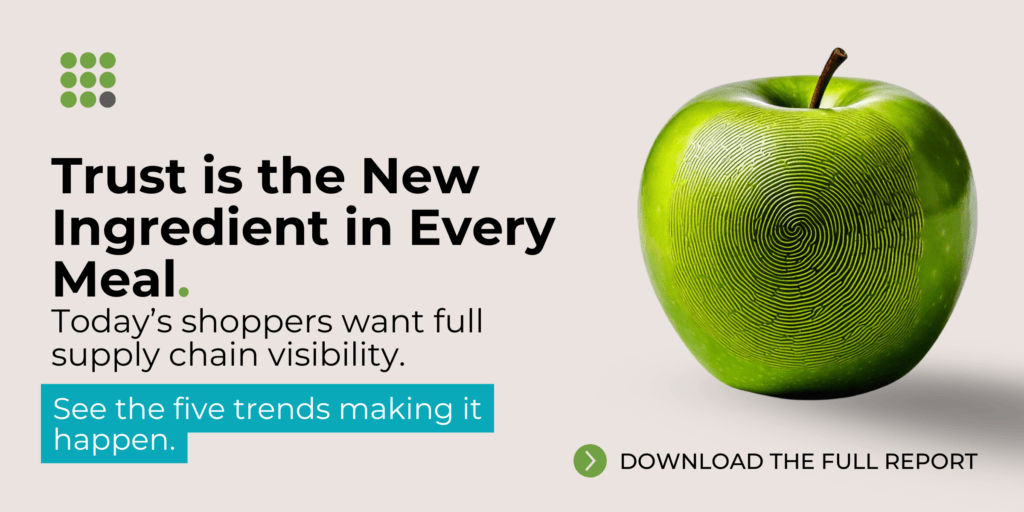Imagine watching a movie with stunning cinematography—breathtaking visuals, vibrant colours, and meticulously framed scenes. However, as beautiful as the film looks, you soon realise there’s little to no plot. The characters are underdeveloped, the storyline is incoherent, and the dialogue is forgettable. Despite the visual feast, the movie fails to engage because it lacks substance.
This trend mirrors what’s happening in data storytelling today. Many believe data storytelling is about creating attractive charts and graphs. While these visuals make complex data easier to understand, they miss out on the crucial elements of data and narrative that complete the story.
Just as a visually stunning movie without a solid plot and character development falls flat, a data story that relies solely on visuals fails to convey meaningful insights. Visuals alone cannot provide context or explain the significance of the data. They need to be part of a larger narrative that guides the audience through the insights and their implications.
Moreover, this overemphasis on visualisation can lead to fragmented and disjointed stories. Individual charts might show exciting data points, but without a cohesive narrative, they remain isolated observations rather than a unified story. This approach can confuse rather than inform, leaving the audience without a clear understanding of the message.
Overemphasis on visualisation can also lead to inadequate training for data professionals. Many organisations pour resources into visualisation tools and techniques, often at the expense of developing data analysis and narrative crafting skills. This imbalance hampers the ability to produce impactful data stories that foster understanding and prompt action.
So, while data visualisation is an essential aspect of data storytelling, it is just one part of a larger process. A successful data story requires a balanced approach integrating data, narrative, and visuals. By broadening our focus beyond just the visuals, we can unlock the full potential of data storytelling and communicate insights more effectively.
Understanding Data Storytelling
Data storytelling is the art of communicating insights from data through a blend of data, narrative, and visuals. These three components work together to create a compelling and comprehensive story that informs and engages the audience.
Data
Data forms the foundation of any data story. It consists of the facts, figures, and statistics that provide the evidence needed to support the narrative. Without accurate and relevant data, the story lacks credibility and substance. Data must be carefully analysed and interpreted to uncover meaningful insights that drive decision-making and action.
Narrative
The narrative is the storyline that ties the data together. It provides context, explains the significance of the data, and guides the audience through the insights in a logical and engaging manner. A well-crafted narrative ensures that the data is not just a collection of isolated points but a coherent story that highlights trends, patterns, and key takeaways. The narrative adds depth and meaning to the data, making it more relatable and easier to understand.
Visuals
Visuals, such as charts, graphs, and images, play a crucial role in data storytelling by making complex data more accessible and easier to comprehend. They help to highlight important insights, illustrate trends, and provide visual context to the narrative. However, visuals should complement the data and narrative, not overshadow them. Compelling visuals enhance the story and aid communication, but they must be used thoughtfully and strategically to avoid confusion and misinterpretation.
The Synergy of Data, Narrative, and Visuals
When data, narrative, and visuals are combined effectively, they create a powerful data story. Data provides the evidence, the narrative delivers the message, and the visuals make the information engaging and accessible. Each component supports and enhances the others, ensuring the story is informative and compelling.
A successful data story is one where the audience can quickly grasp the insights and understand their implications. It moves beyond simply presenting data points to telling a story that resonates with the audience, drives understanding, and prompts action. By integrating data, narrative, and visuals, data storytelling transforms raw data into meaningful and actionable insights, making it a vital tool for communication in today’s data-driven world.
The Misconceptions about Data Visualisation
Misconception 1: Every Data Chart Tells a Story
Data charts and graphs help present information but don’t tell a story by themselves. A single chart might show a trend or an interesting point, but without context and narrative, it can’t fully convey the data’s significance. Charts alone are static representations without the narrative needed to explain their relevance and guide the audience through the insights.
Misconception 2: A Collection of Charts Equals a Data Story
People often think that a collection of loosely connected charts can tell a complete data story. But, like random movie scenes that don’t make a coherent film, unrelated charts fail to create a cohesive narrative. While each chart might contain valuable data, without a unified storyline, the audience is left to piece together the insights, leading to confusion and misinterpretation.
The Importance of Narrative
A strong narrative is essential to transform data charts into a compelling data story. The narrative weaves together the individual data points, providing context and explaining the significance of the visuals. It guides the audience through the data, highlighting key insights and their implications. A well-constructed narrative ensures that the data is not just a series of disjointed observations but a coherent story communicating a clear and meaningful message.
The Role of Context
Context is crucial in data storytelling. A single chart might show a spike in sales, but without context, it is difficult to understand why this spike occurred and what it means for the business. The narrative provides this context, explaining the factors behind the data and its broader implications. This context turns raw data into actionable insights, enabling the audience to make informed decisions.
The Need for Coherence
A complete data story requires coherence—each element must connect logically to the others. This coherence is achieved through a narrative that ties the data points together and visuals that support and enhance the narrative. Without coherence, the audience may find the story fragmented and challenging to follow, diminishing the impact of the data.
The Role of Dashboards in Data Storytelling
Dashboards have become a staple in data analysis and business intelligence. They offer a dynamic way to monitor key metrics, track performance, and explore data in real-time. However, while dashboards are powerful tools for data exploration, they differ significantly from data stories.
Dashboards: Tools for Data Exploration
Dashboards are designed to provide a broad view of multiple data points and metrics simultaneously. They offer interactive elements, allowing users to drill down into specific areas of interest, filter data, and view trends over time. This flexibility makes dashboards ideal for exploring data, identifying patterns, and gaining a high-level overview of performance indicators.
Key Characteristics of Dashboards
- Real-Time Monitoring: Dashboards update in real-time or near real-time, offering the latest data insights as they happen. This feature is invaluable for continuous monitoring and quick decision-making.
- Interactive Elements: Users can interact with dashboards by applying filters, adjusting timeframes, and drilling into detailed views. This interactivity supports in-depth exploration and customised analysis.
- Multiple Data Sources: Dashboards often integrate data from various sources, presenting a comprehensive view of different metrics and KPIs in one place. This holistic view aids in comparing and correlating different data sets.
Data Stories: Focused and Cohesive Narratives
Unlike dashboards, data stories are designed to convey specific insights through a structured narrative. They guide the audience through a series of data points, emphasising the connections and implications of the data. A data story has a beginning, middle, and end, with each element building on the previous one to deliver a cohesive and compelling message.
Key Characteristics of Data Stories
- Structured Narrative: Data stories follow a clear storyline with a logical flow that guides the audience through the insights. This structure helps to contextualise the data and highlight its significance.
- Targeted Insights: Data stories focus on specific insights or findings, explaining their relevance and implications in detail. This targeted approach ensures that the audience grasps the key messages and their impact.
- Emphasis on Communication: The primary goal of data stories is to communicate insights effectively, often using a combination of data, narrative, and visuals. This balanced approach enhances understanding and engagement.
Why Dashboards Are Suited for Exploration, Not Storytelling
- Fragmented View: Dashboards simultaneously present multiple metrics and data points, which can be overwhelming and challenging to interpret without additional context. This fragmented view is excellent for exploration but less effective for delivering a cohesive narrative.
- Lack of Narrative: While dashboards allow users to explore data, they do not inherently provide a narrative. Users must piece together insights on their own, which can lead to varied interpretations and potentially missed connections.
- Focus on Monitoring: Dashboards’ primary function is to monitor and explore data continuously. They are designed for ongoing analysis rather than presenting a one-time, well-crafted story.
The Three Key Elements of Data Storytelling
Data storytelling is a powerful way to communicate insights, but it relies on effectively integrating three key elements: data, narrative, and visuals. Each component uniquely contributes to crafting a compelling story that informs and engages the audience.
Data: The Foundation
Data forms the foundation of any data story, providing the factual basis that supports the narrative and adds credibility to the insights. Without accurate and relevant data, the story lacks substance and can fall apart. Robust data analysis is crucial to uncovering meaningful patterns and trends, ensuring that insights are trustworthy and can inform decision-making.
Narrative: The Guide
The narrative ties the data into a coherent story, providing context and meaning. It guides the audience through the insights, explaining their importance and implications. A structured narrative highlights key points and keeps the audience engaged, transforming raw data into an informative, compelling, and easy-to-follow story. A well-crafted narrative presents data logically, making the insights clear and impactful.
Visuals: The Enhancer
Visuals play a crucial role in making data accessible and understandable. Charts, graphs, and other visual aids can quickly convey complex information and highlight important trends. However, visuals should complement the data and narrative, not overshadow them. Compelling visuals enhance the storytelling by making data more relatable and easier to interpret, but they should always support the story, not dominate it. Over-reliance on visuals can detract from the message if poorly integrated with the narrative and data.
| Aspect | Data | Narrative | Visuals |
| Role | Provides the factual basis and credibility | Guides the audience through the insights | Enhances understanding and accessibility |
| Importance | Essential for trustworthy and reliable insights | Crucial for context and meaningful communication | Important for clarity and engagement |
| Function | Forms the core content of the story | Weaves the data into a cohesive and compelling story | Illustrates data trends and patterns visually |
| Dependency | Must be accurate and relevant to be effective | Relies on data for substance and context | Should complement and support data and narrative |
| Challenges | Requires thorough analysis and validation | Needs to be structured and engaging | Can overshadow data if overemphasised |
| Examples | Statistics, figures, metrics | Explanations, contextual information, storytelling | Charts, graphs, infographics |
| Outcome | Credible and actionable insights | Clear and impactful message | Visual clarity and enhanced comprehension |
A Balanced Perspective on Data Storytelling
To fully leverage data storytelling, it is crucial to adopt a balanced approach that integrates data, narrative, and visuals. This contrasts with a visualisation-centric view, which overly focuses on visuals at the expense of narrative and data quality. A balanced approach ensures that each element complements the others, leading to more effective communication of insights.
Visualisation-Centric View vs. Balanced Approach
Visualisation-Centric View
- Emphasis on Charts and Graphs: A visualisation-centric approach prioritises the design and aesthetics of charts and graphs. The primary goal is to create visually appealing representations of data.
- Potential Overlooks: This view can overlook the importance of context and storytelling, leading to visually impressive charts lacking depth and meaning.
- Fragmented Insights: The data presented can seem disjointed without a strong narrative. Individual charts may not convey how they relate to one another or the overarching message.
Balanced Approach
- Integration of Elements: A balanced approach seamlessly integrates data, narrative, and visuals. Each element is given equal importance, ensuring a well-rounded and coherent story.
- Context and Meaning: The narrative provides context and meaning to the data, explaining why the insights matter and how they impact the audience. This makes the story more engaging and easier to understand.
- Coherent Storytelling: By combining well-analysed data with a compelling narrative and supportive visuals, the story is presented cohesively. This helps the audience grasp the complete picture and the implications of the insights.
Examples of a Balanced Approach
Example 1: Market Research Report
- Data: A company conducts a market survey and gathers extensive data on consumer preferences and buying behaviours.
- Narrative: The report begins with an introduction to the market trends and the purpose of the survey. It then guides the reader through crucial findings, explaining the significance of each trend and how it affects the market landscape.
- Visuals: Charts and graphs highlight important data points, such as shifts in consumer preferences over time or comparisons between different demographics. These visuals support the narrative, making complex data easier to digest.
Example 2: Business Performance Review
- Data: A quarterly business review includes performance metrics such as sales figures, customer satisfaction scores, and operational efficiency.
- Narrative: The review starts with an overview of the company’s goals and objectives. It then narrates the story of the quarter’s performance, linking the data to specific business strategies and initiatives.
- Visuals: Visual aids like bar charts, line graphs, and pie charts illustrate the performance metrics. They are strategically placed within the narrative to emphasise critical points and trends, helping stakeholders understand the outcomes and future implications.
Example 3: Health Research Study
- Data: Researchers collect data on the effects of a new medication on patient health outcomes.
- Narrative: The study report outlines the research hypothesis, methodology, and key findings. It narrates the journey from hypothesis to conclusion, explaining the significance of the results and their impact on medical practice.
- Visuals: Tables, graphs, and infographics summarise the data, showing the medication’s effects on various health parameters. These visuals enhance the narrative, making the scientific data accessible to a broader audience.
Shifting Focus: Effective Communication
To maximise the impact of data storytelling, organisations must see it as a comprehensive communication tool. This goes beyond just creating attractive visuals and emphasises integrating data, narrative, and visuals to convey insights effectively. Shifting to this holistic approach is crucial for effective communication and avoiding common pitfalls.
Recognising Data Storytelling as a Comprehensive Tool
Data storytelling is a communication method that combines three critical elements: data, narrative, and visuals. Each component is vital in conveying insights and making the story informative and engaging. When organisations understand and embrace this comprehensive approach, they can communicate complex information more clearly and persuasively.
- Data: Provides the factual foundation and credibility.
- Narrative: Adds context and meaning, guiding the audience through the insights.
- Visuals: Enhances understanding and engagement, making complex data accessible.
Potential Pitfalls of Focusing Narrowly on Visualisation Training
Many organisations invest heavily in visualisation training, believing that creating visually appealing charts and graphs is the key to effective data storytelling. However, this narrow focus can lead to several pitfalls:
- Inadequate Context and Meaning: Without a strong narrative, data visualisations can lack context and fail to convey the significance of the insights. Charts alone cannot explain why the data matters or how it impacts the audience, resulting in a superficial understanding of the information presented.
- Fragmented Insights: A collection of visually appealing charts may not form a cohesive story. Without a narrative to tie the data points together, the audience may struggle to see the connections and overarching message. This fragmentation can lead to confusion and misinterpretation.
- Underdeveloped Data Skills: Overemphasising visualisation training can lead to underdeveloped data analysis skills. Accurate and insightful data analysis is the foundation of any data story. Without solid data skills, the visualisations may be based on incomplete or incorrect interpretations, undermining the story’s credibility.
- Missed Opportunities for Engagement: A compelling narrative is crucial for engaging the audience and making the data relatable. Without narrative skills, data professionals may miss opportunities to connect with their audience more deeply. Engaging stories can inspire action and drive decision-making more effectively than standalone visuals.
The Need for a Balanced Approach
Brands must shift their focus to a balanced approach that integrates data, narrative, and visuals. This comprehensive training ensures that data professionals are equipped with the necessary skills to create compelling data stories:
- Data Analysis: Training should emphasise the importance of thorough data analysis, ensuring that insights are accurate, relevant, and actionable.
- Narrative Construction: Developing narrative skills is essential for crafting stories that provide context, highlight significance, and guide the audience through the insights.
- Visualisation Techniques: While visualisation is important, it should be taught as one component of a larger storytelling framework, complementing the data and narrative.
By adopting this balanced approach, organisations can enhance their data storytelling capabilities, leading to more effective communication and better decision-making.
Embracing a Balanced Approach
The prevailing misconception that data storytelling is synonymous with data visualisation undermines its true potential. Compelling data storytelling is not just about creating eye-catching charts; it’s about weaving together data, narrative, and visuals to communicate insights compellingly and clearly.
A balanced approach to data storytelling is crucial. Data provides the factual foundation, the narrative guides the audience through the insights, and visuals enhance understanding. Neglecting any of these elements can lead to fragmented, superficial stories that fail to engage and inform.
Brands must shift their focus from purely visualisation-centric training to a more comprehensive model that equally values data analysis and narrative construction. This holistic view ensures that data stories are visually appealing but also meaningful and actionable.
Adopting this balanced perspective transforms data from mere numbers into powerful stories that drive decision-making and inspire change. It’s time for organisations to recognise the full scope of data storytelling and invest in developing the skills that bring data to life.















 Senior Marketing Executive
Senior Marketing Executive Sales & Marketing
Sales & Marketing General Manager PR -Internal Communications & Government Affairs
General Manager PR -Internal Communications & Government Affairs Vital Strategies
Vital Strategies
 Customer Intelligence Director
Customer Intelligence Director